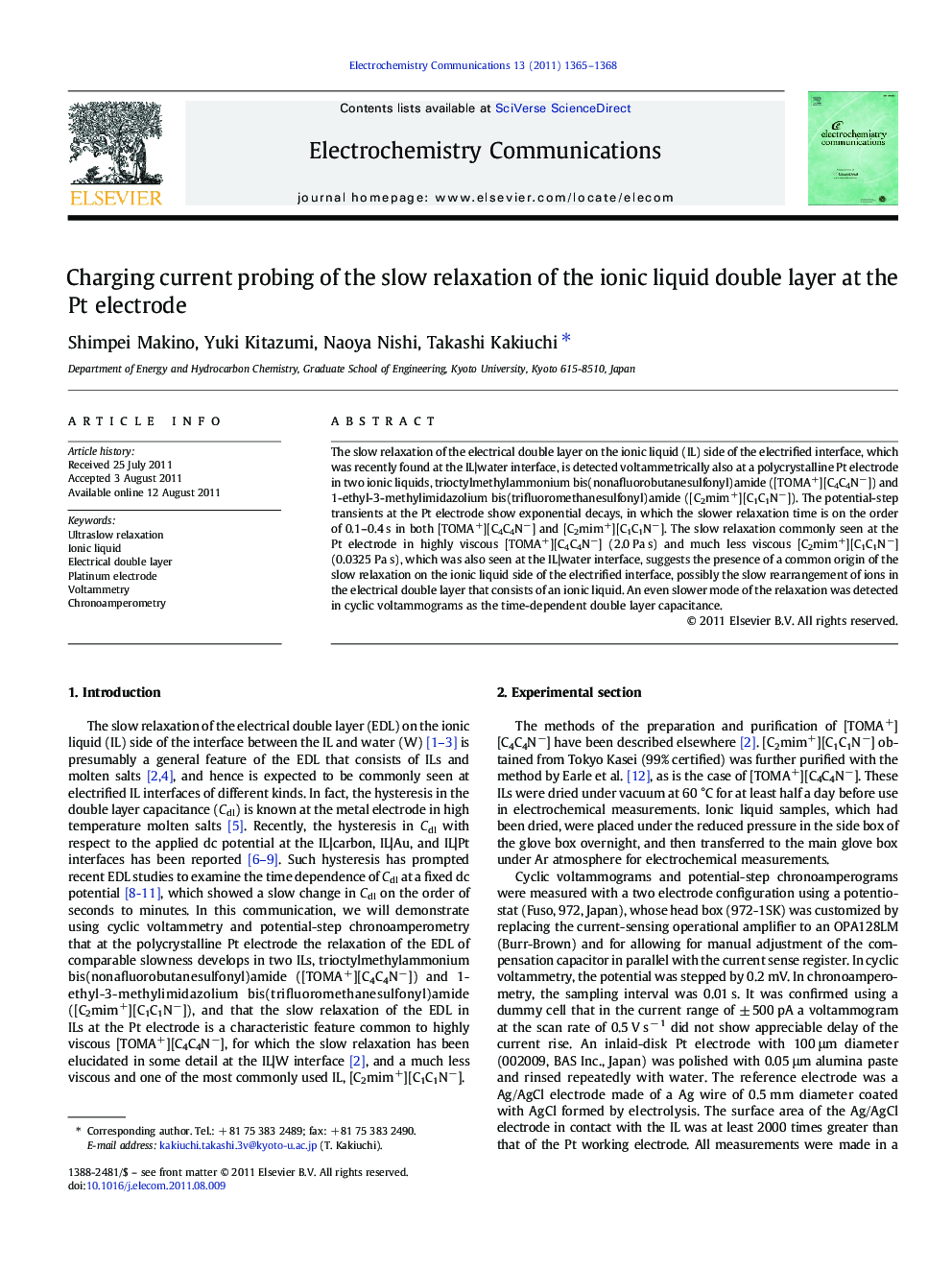| Article ID | Journal | Published Year | Pages | File Type |
|---|---|---|---|---|
| 180228 | Electrochemistry Communications | 2011 | 4 Pages |
The slow relaxation of the electrical double layer on the ionic liquid (IL) side of the electrified interface, which was recently found at the IL|water interface, is detected voltammetrically also at a polycrystalline Pt electrode in two ionic liquids, trioctylmethylammonium bis(nonafluorobutanesulfonyl)amide ([TOMA+][C4C4N−]) and 1-ethyl-3-methylimidazolium bis(trifluoromethanesulfonyl)amide ([C2mim+][C1C1N−]). The potential-step transients at the Pt electrode show exponential decays, in which the slower relaxation time is on the order of 0.1–0.4 s in both [TOMA+][C4C4N−] and [C2mim+][C1C1N−]. The slow relaxation commonly seen at the Pt electrode in highly viscous [TOMA+][C4C4N−] (2.0 Pa s) and much less viscous [C2mim+][C1C1N−] (0.0325 Pa s), which was also seen at the IL|water interface, suggests the presence of a common origin of the slow relaxation on the ionic liquid side of the electrified interface, possibly the slow rearrangement of ions in the electrical double layer that consists of an ionic liquid. An even slower mode of the relaxation was detected in cyclic voltammograms as the time-dependent double layer capacitance.
► The slow relaxation has been confirmed at the ionic liquid|Pt interface. ► The slow relaxation is not correlated with the viscosity of ionic liquids. ► The slow relaxation is a common feature at the electrified ionic liquid interfaces. ► The slow relaxation is reflected in voltammetry and chronoamperometry.
